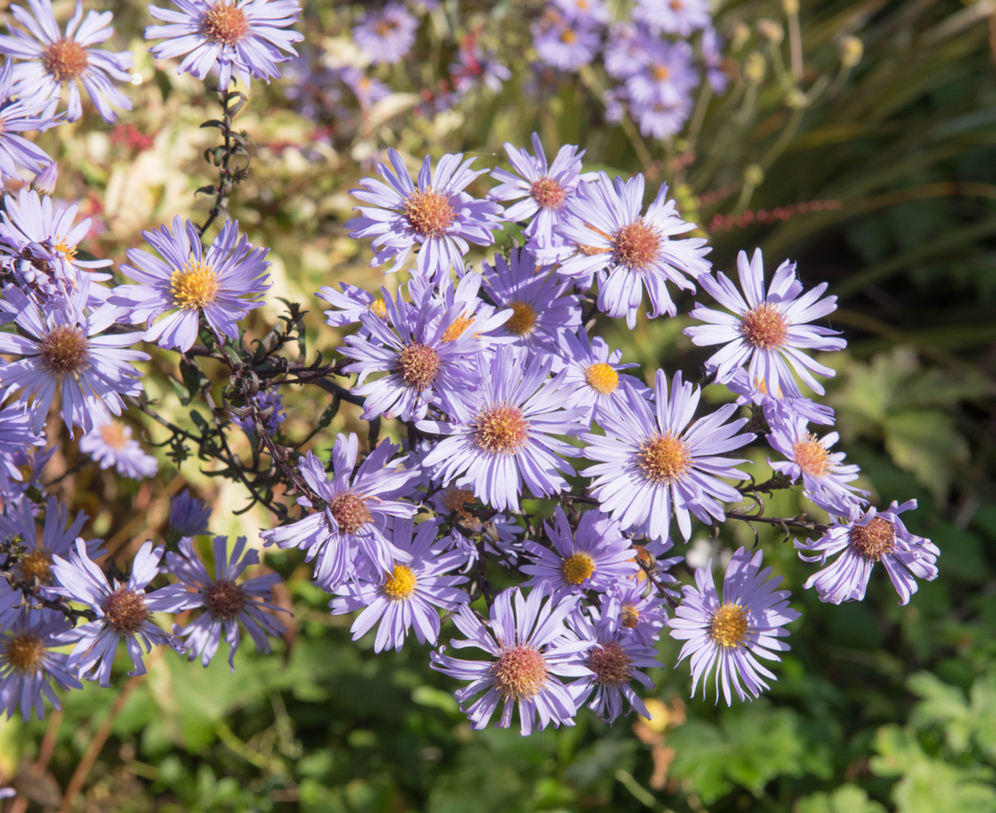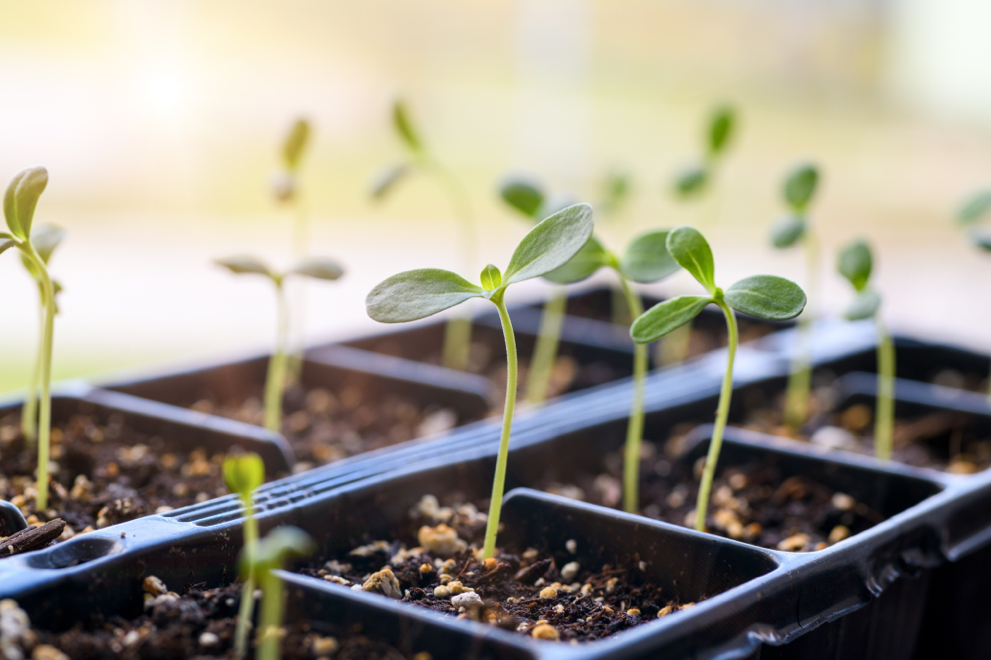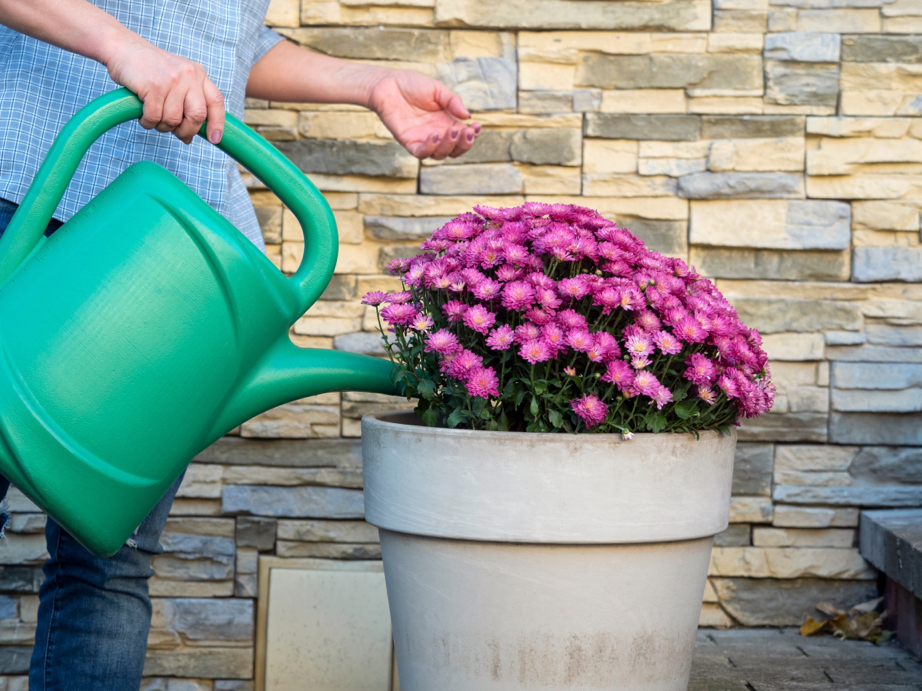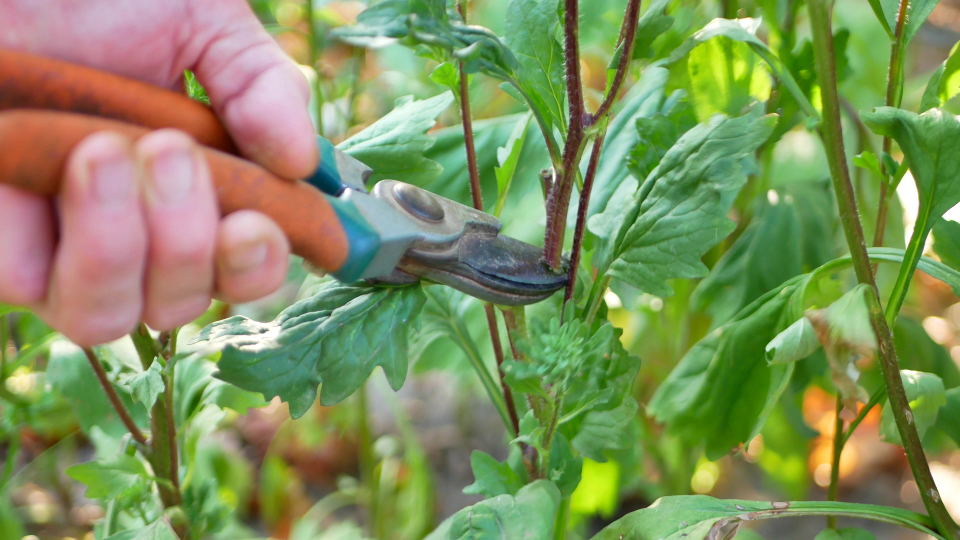Asters Look Great When Grown In Terracotta Or Glazed Pots – Here’s How To Grow Yours

PERENNIALS > ASTERS > CONTAINERS

Ed is a horticultural therapist, professional gardener and writer. Ed has a BSc in Occupational Therapy from Coventry University and a Diploma in Social and Therapeutic Horticulture (DipSTH) via Thive, the RHS and Pershore College. Ed runs a community kitchen garden in West Sussex, where he leads horticultural therapy sessions.
Reviewed By DAN ORI

Dan has over 27 years’ under his belt caring for plants and gardens. Working as a Horticultural Instructor and Consultant, he draws on a diverse range of experience that includes working as a Head Gardener, Tree Surgeon, Garden Centre Trouble Shooter, and writer of academic papers. Dan has a Level 3 Diploma in Horticulture and is currently a candidate for the RHS’s most prestigious award – The Master of Horticulture.
IN THIS GUIDE
ASTERS GUIDES
Container Growing
Growing From Seed
Transplanting
Propagation
Varieties
Asters are autumn-flowering perennial plants that grow well in either containers or pots.
Flowering from August onwards, Asters are a must-have for any autumn border as they are often still flowering when many other plants have finished.
Asters are sometimes known as Michaelmas daisies, as they are usually in flower around Michaelmas, a Christian festival observed on 29th September.1Johnson, B. (2021, August 31). Michaelmas. Historic UK. Retrieved March 9, 2023, from https://www.historic-uk.com/CultureUK/Michaelmas/
There are many types of aster, but this article concentrates on Symphyotrichum novi–belgii varieties that are also known as Michaelmas daisies.
Can You Grow Asters In Pots?
Along with being planted directly into a border, Asters grow well in containers and pots, providing there are plenty of drainage holes for any excess water to drain away freely.

When grown in a container they have the added benefit of being able to be moved into pride of place when they come into flower and hidden away when they die back over winter.
Choosing A Container
When choosing a container to grow Asters in, it is important to take into account the final size of the plant as some will remain relatively small, but others like Aster × frikartii ‘Mönch’ can grow to 1m in height and will require a sizeable container.

Asters look great when grown in terracotta or glazed pots, however, they can be susceptible to frost damage, unlike stone, lead or fibreglass.
Choosing Compost
Apart from water-logged soil, Asters are very tolerant of what they are grown in and will cope with any pH soil.
However, they prefer a well-drained and humus-rich growing medium, and a general multi-purpose and peat-free compost is ideal.
Potting Up Asters
Asters are best planted out in either spring or autumn.
To pot up an Aster, add some gravel or crocks to the bottom of the pot or container and half fill with compost.

Remove the plant from its pot and place it in the new container backfilling with compost until the plant is at the same depth it was previously planted at.
Water well and until established.
Since containers and pots have a limited resource of nutrients, it can be advisable to add a slow-release fertiliser at the time of planting.
How Many Can You Plant Per Pot?
Depending on the size of the variety, Asters can either be planted individually or in groups in containers.
Small varieties can look impressive when potted up together in groups of 3-5.

Larger plants, depending on their size, may need to be planted individually.
Some Asters can be affected by mildew, which can be encouraged by overcrowding, so it is advisable to allow them space to mature when planted in groups.
Potted Aster Care
Growing Asters in containers may require a little more care than when grown directly in the ground.
Containers and pots dry out more quickly, especially during the summer months, so attention needs to be paid to make sure the Asters receive enough water and are not allowed to completely dry out in between watering.
Asters prefer a rich soil and when grown in containers need some extra nutrients to ensure they flower well.

On top of a slow-release fertiliser on planting it is advisable to repot any Asters as new growth appears in the spring using fresh compost.
To prevent the plants from becoming leggy and to extend the bloom time, the growing tips of one third of the stems can be pinched out in summer.
The flowers can be deadheaded as they fade and the plant either cut back to the base in November once blooms finish or left for the wildlife over winter and cut back in early spring.
After 3-4 years Asters can become woody and sparse leading to fewer flowers.

In spring, once new growth has appeared, Aster plants can be divided into 2-3 smaller sections, each containing some new shoots using a spade or a knife.
These divisions can then be re-potted, planted out elsewhere in the garden or given away.
Here in the United Kingdom, most Asters are fairly hardy but can be more susceptible to severe winter weather when grown in containers.
If possible, plants should be moved to a cold frame, unheated greenhouse or protected porch to over winter the harshest weather.
References
- 1Johnson, B. (2021, August 31). Michaelmas. Historic UK. Retrieved March 9, 2023, from https://www.historic-uk.com/CultureUK/Michaelmas/
